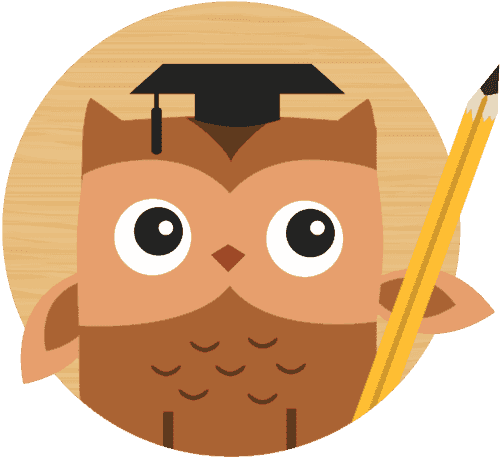The question, “Daddy, what’s a stagecoach?” popped up several years ago when I was helping my child with a reading comprehension passage. The passage was about Sacagawea, the young Native American woman that helped Lewis and Clark immensely in their expedition.
I told her that two hundred years ago when there were no cars, people used horse-drawn carts to move goods and people from one place to another. I asked her to get the dictionary and asked her to look up the word which she did. Although she didn’t ask me, I thought showing a picture of a stagecoach would help her better understand what it looked like. We got our iPad, opened the browser, did a Google or Bing search and saw pictures of a stagecoach. We even saw a couple of videos. She got it!
We did it for some more words and phrases. That’s when several questions dawned on me.
1. As my child was reading, she had difficulties in pronouncing certain words. I helped her a little but then I thought how can I provide a tool that can pronounce them for her?
2. I noticed that it took my child quite some time to look up the word in the dictionary. How can I cut down this time and make it easier for her so that she can go back to reading?
3. Additionally, I found that the definition in the dictionary also contained words that could not be easily understood. How can I make the word definitions more age appropriate?
4. For one word the dictionary gave many definitions, one for each part of speech. This confused my child. She was thinking “Is the word that I just read a verb or a noun or an adjective? Which meaning should I go with?” That’s when I asked myself, “How can I also make the definitions more context sensitive so that she only sees the relevant meanings”?
5. I noticed that after I helped her three or four times, she stopped asking me and stopped looking up words in the dictionary or searching for an image. She did continue reading though. Did fatigue set in? Is she tired of looking up the dictionary or doing a web search for an image or a video? Is she getting distracted from her main activity which is reading and comprehending the passage? I realized that all this searching and looking up was taking up precious time and it was taking her longer to finish reading the passage. She was also losing the flow of the passage.
6. I thought, what if my wife or I didn’t have time in the evening to help my child? How can I make my child a self-sufficient and independent reader? What about parents that don’t have time or are too busy or don’t have the wherewithal to help their children? How can the child still be successful? How do I solve this problem?
7. How can I create a level playing field for all children when a teacher gives a reading comprehension assignment to his/her children? Do all of the children have the same tools available to enable them to read better? After all, children have different backgrounds, skills, and knowledge but they are all expected to perform and be judged at the same level.
8. Can you assume that a good reader is understanding everything he/she is reading? How do you make them better and more confident readers?
9. Do we remember the meaning of a word or a phrase better when we encounter them often? Is this how you grow your knowledge? What about those words that we encounter occasionally? Is knowledge obtained only through repetition and regurgitation?
10. How can I use the power of different types of media to enrich the reading experience?
The Solution
These questions led me to think about ways of analyzing and solving the problem. As a child reads a reading comprehension passage, how can he/she get all the information about a word or phrase without actually leaving the reading activity and be self-sufficient and independent in doing so?
This motivated me to develop an App that provided a multi-sensory reading experience to a child. The reading comprehension passage will no longer be a paper copy but an electronic version. As a child reads a passage, with the tap on a word or a phrase, I wanted to provide all information about the word or phrase in one place so that he/she doesn’t leave her reading activity and doesn’t lose focus.
I wanted the word or phrase to be automatically pronounced and the meaning along with examples to be shown. I also wanted to provide context sensitive and age relevant definitions for a given word so that the child is able to easily understand the definition. Then when the reader chooses to tap on other icons, he/she should be able to see a related image, video and hear audio/sound as they are available. For example, for the word “cabin”, apart from pronouncing the word “cabin” and showing its definition, an image and video of what a cabin looks like will also be shown. Likewise for the phrase “log cabin in the woods”. Similarly, if the child tapped on the word “cow” or “horse”, he/she should be able to hear the sound of a cow moo or a horse gallop. I also wanted to provide the option where the app can read a passage aloud to the user. Finally, I wanted to provide a quiz at the end of a passage that will help the child test his/her understanding of the passage. Wasn’t the original purpose for reading?!
With this concept in mind, I started designing and developing a solution using Natural Language Processing (NLP) techniques.
WhizRead has provided some sample passages for each grade level that have already been enriched. Enrichment is the process of transforming plain textual content into rich content that provides all the information about each given word or key phrase in a passage. It is these enriched passages that have been made available to readers.
However, the true power of the WhizRead App lies in a parent or teacher being able to create his/her reading comprehension passage, being able to submit that content to WhizRead for enrichment and within a matter of minutes to have the enriched content available for review and make them available to their children. The teacher or parent will also be able to create a quiz for each passage which can then be used to assess their children.
I truly feel that this can bring about a paradigm shift in how teachers handle reading comprehension passages and are able to move away from a paper-based system to an online system, where each child is given the same tools that enable him/her to become an independent and more importantly a confident reader.
This is also a great way for people to learn the English language and become proficient in it. It is also an excellent tool for children with learning disabilities and those children that just learn differently. A multi-sensory experience provides these children multiple ways in understanding what they read. I hope you are able to benefit from the WhizRead App. I would be happy to receive direct feedback on the App from you. This will help me improve the App.
Please email your feedback to team@whizread.com.

